Cane Corso, 9 months old – Case study of Capper
In this case we present a Cane Corso, 9 months old. He walks stiffly in the hindquarters, shows a painful pelvis and trembling forelegs. He was presented for a second opinion at the practice of Dr Blättler-Monniers.
Initial situation
Capper walks stiffly in the hindquarters and shows pain in the pelvic region. In addition, he trembles in his front legs.
The owner has already been to the PTA who advised to wait with the treatment for the time being. In addition, a shell compound was given. When there was no improvement in the gait, the dog was brought to our practice for a second opinion.
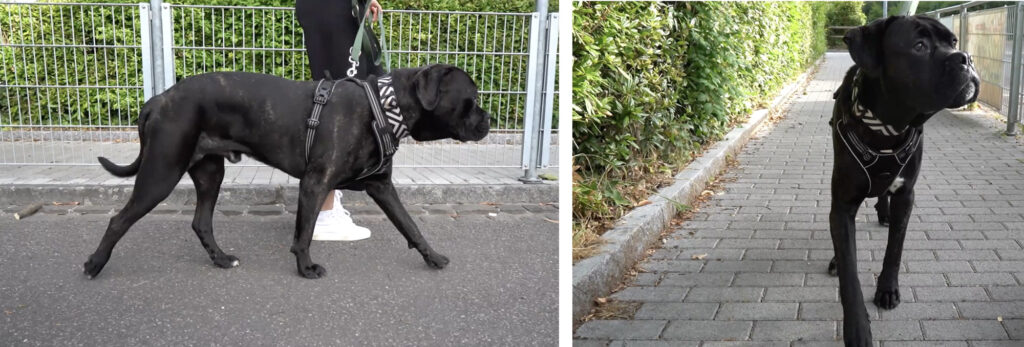
Gait pattern
Capper’s gait pattern is very stiff. He shows reduced bending in both knees. In addition, there is toe widening in the left pelvic limb. On the right side, the pelvis is low, which causes an obliqueness. The left shoulder is less spacey. On the move, Capper is in a right outset position and traverses over the right shoulder.
From the side, a slope leg lameness can be seen in the right and left pelvic limb. In addition, both pelvic limb masses are in an ankurvature and are placed below the centre of gravity. The bending of both knees is reduced. The back shows kyphosis.
In general, the hindquarters show little drive; Capper performs a pull move and pulls mainly with the forehand. The left pelvic limb is passively pulled and appears even more ponderous.
Gait pattern on the volte (circle)
On the volte, Capper looks similar: His movement is ponderous. The drawn up back has an even greater effect under these circumstances. In addition, the slope leg lameness has increased on the right as well as on the left. We are talking about turning pains here.
Especially the left pelvic limb mass seems to be strongly reduced in movement, the toe widening has also increased.
Last but not least, the pelvis tilts when sitting. The left side appears much more unstable.
Diagnosis
Capper shows bilateral hip dysplasia: moderate on the right side, severe on the left.
Kinematics
The kinematic data of the LupoGait® measurement supports the diagnosis: the reproducible movement features also indicate hip joint dysplasia.
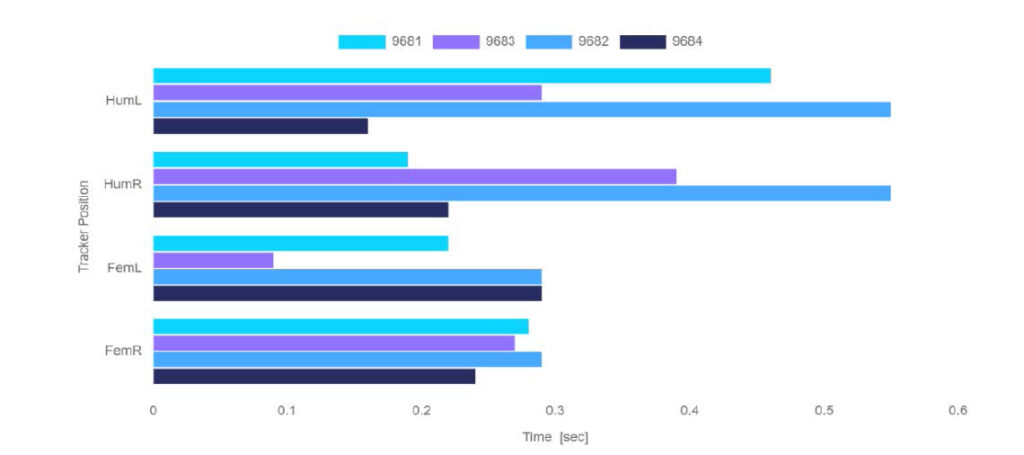
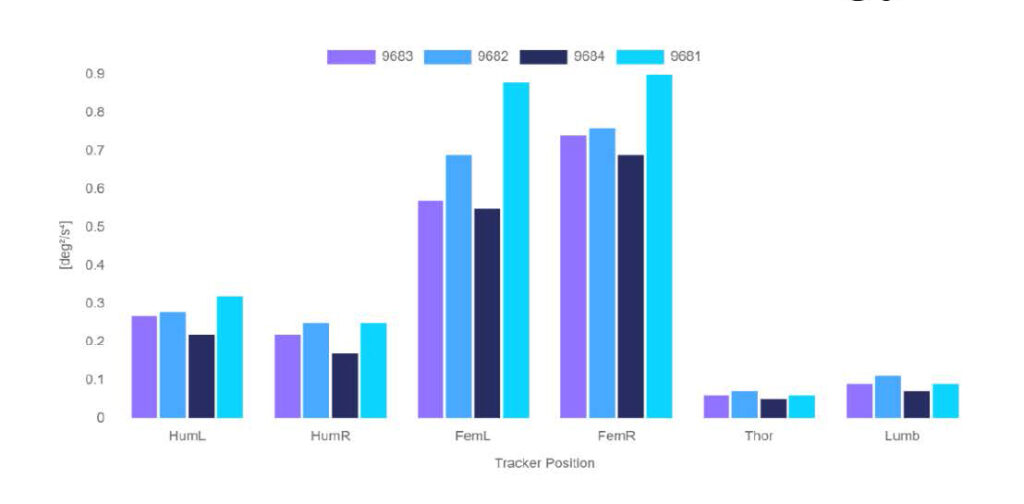
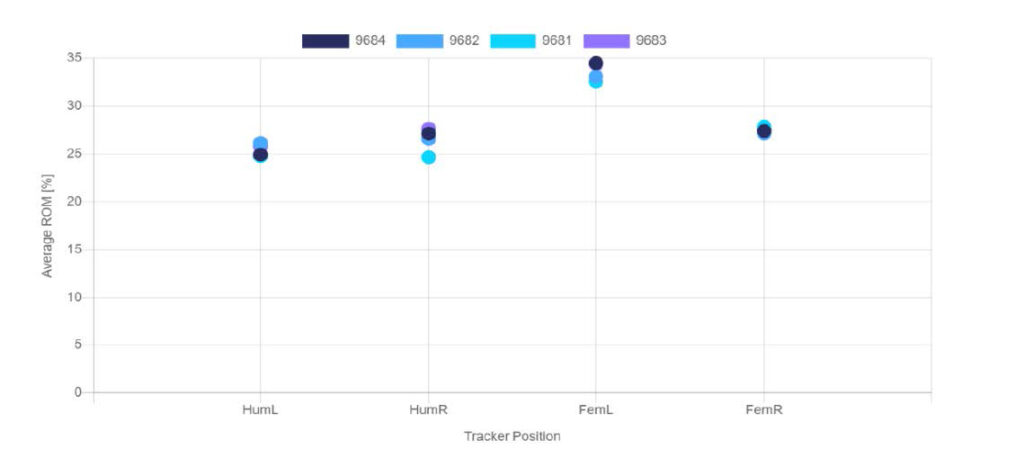
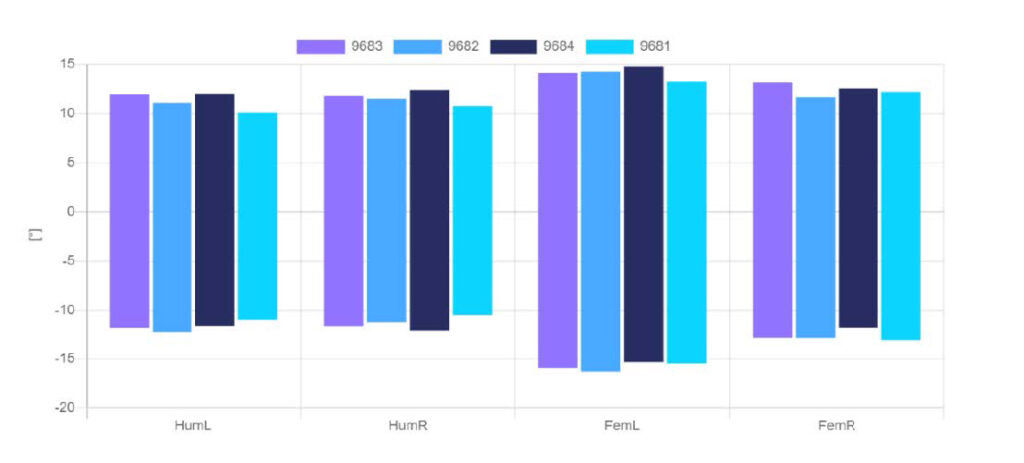
Therapy (short-term)
In the short-term therapy, the pelvic axis was treated orthopaedically-manually. Furthermore, bednivetmabum was prescribed as injection therapy until the pelvis had grown out.
Depending on the course of the clinical symptoms, an individually tailored hip joint prosthesis (custom-made TEP) is indicated.
Watch Capper’s case also as a video:
For more information on kinematic gait analysis and the correct build-up of puppies, take a look at our book “LUPOMOVE® PUPPY – THE INNOVATIVE DEVELOPMENT AND PROPHYLAXIS PROGRAMME FOR PUPPIES”.